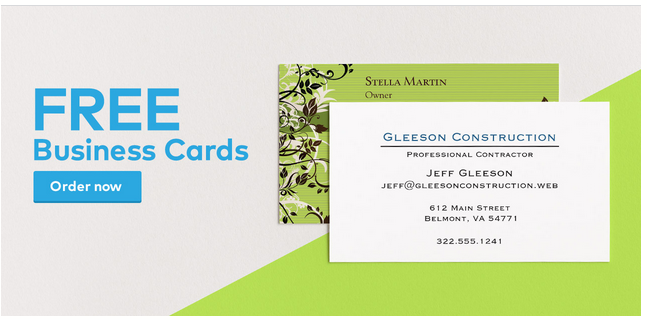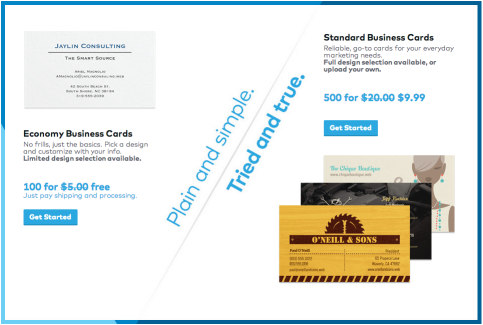 Marketing
Marketing
This Tiny Copywriting Mistake Just Cost Someone a Sale
I’m writing this sentence on a $1,000 iMac computer, and I’m listening to music on some pricy headphones. My smartphone, also spiffy and new, beeps whenever I get an email or instant message. And, with IFTTT, my Fitbit reminds me to get up and go for a walk.
With all these beeps and boops and screens around me, you’d think there would be a more modern way for people to connect in person. But when you’re at a conference, you reach for your business card, not a smartphone. Even in our unflinchingly fast times, business cards reign supreme. They’re easy to carry around, cheap to pass out to people and have an strong air of professionalism about them.
Still, the business card industry has to keep up with the times. It can’t rest on its generations-long laurels forever. New designs have to be created, creative liberties have to be taken and boundaries have to be pushed. That’s why I frequently look to the industry for copywriting inspiration.
The Mistake
I opened up a promotional email today from a business card company (that shall remain nameless), and saw this huge image, front and center, above some other copy that I totally ignored. Even though I don’t particularly need business cards now, I clicked on it, because hey, it’s free! Who doesn’t like free stuff? Maybe I could get them for my cat.
I clicked on that “order now” button, and was taken to a page that featured a side-by-side spread of the free business cards, as promised, and some slightly-more-expensive business cards. While I could get 100 cards for free, I could get 500 for only $9.99 — and I could customize them, too, with a design of my choosing. Plain vs. designed? Simple vs. intricate? Hmmmm. Choices, choices.
So there I was, right on the cusp on deciding between “plain and simple” or “tried and true.” Both options sound good, and the copy is expertly written to make either a winning decision. That’s when I saw the one glaring mistake that turned me off of the whole process, like the ice-cold center of a poorly-microwaved Hot Pocket.
In the URL of the page, I saw this:
Ugh! Gross! Barf-o-Rama!
Even though it was totally apparent that this was an opportunity to upsell the customer, no one likes to feel like they’re being upsold. “Upselling” is a term reserved for internal use only, not for the customer. There’s a bunch of other less loaded words that could have been used in its place: “offer,” “coupon” or “bonus,” to name a few. Using “upsell” made me feel manipulated, like I was just another opportunity to make some cash.
For this company to include this sales-heavy term in their public-facing URL is a mistake. A small one, but it was enough for me, and probably other people out there, to exit the page.
The Lesson
When you’re doing business online, assume everything is public-facing, even if it’s hidden in the alt text or you have to use your browser’s “inspect element” feature to discover it. Assume your customers are poring over everything you put online, from the URLs to the copy inside graphics. And your reputation is resting on it.
While you might use terms like “upsell,” “lead,” “funnel,” “conversion” or countless other words to refer to your clients or customers around the office (and it’s perfectly OK to do so), don’t ever risk using them in a public-facing perspective.
Put yourself in your customers’ shoes: would you want to feel like just another drop in the funnel? Just another lead to convert?
Your customers are what your business depends upon, and they shouldn’t ever feel like a cog in a machine, or like they’re being cajoled to buy more than they need. Right down to the tiniest of copy, treat your customers like friends and close associates.
Copywriting is about respect, and making your customers feel respected. Carefully show your customers with what they need to know without the fluff or the sales doublespeak, and they’ll respect you by buying your product.
What copywriting errors have turned you off from a company? Let us know in the comments!





